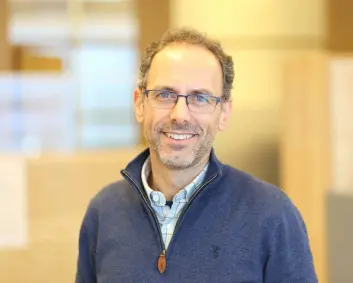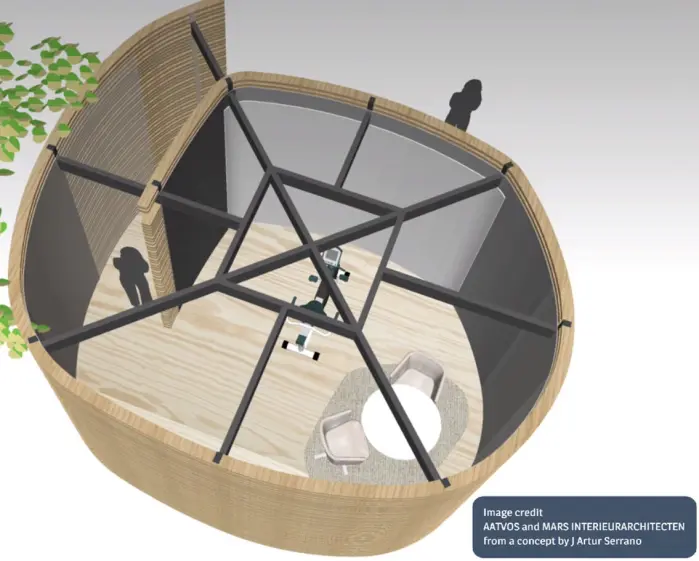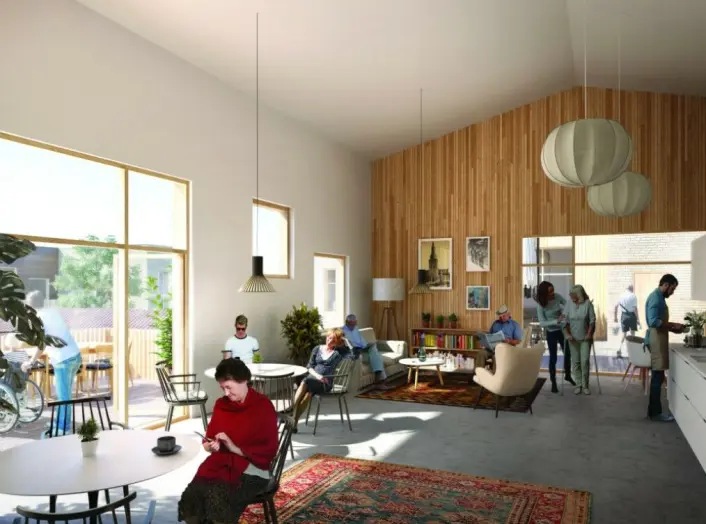Often, we hear or read about something that is going to happen in the future. We must be prepared for what is to come, we must be “ready” so that we can meet these coming challenges.
But what if the future is already here? And the challenge is we can’t adapt fast enough?
“We have to think creatively. Now more than ever, it is important that we collaborate to build good society and healthcare, enabled by technology.”
That’s according to Professor Artur Serrano from NTNU, the Norwegian University of Science and Technology. There, he worked in the Department of Neuromedicine and Exercise Science. For more than thirty years, he has been committed to research and innovation. He also worked for many years at the Norwegian eHealth Research Center.

various prototypes
A growing number of universities offer courses and degrees in healthcare technology and health innovation. The possibilities of technology must be exploited and new competencies are needed for staff, especially because of the shortage of staff in the health sector.
So, at NTNU, they have created an interdisciplinary program that focuses on creating innovative societies using future healthcare technologies. Here, students can think creatively and prototype new technology services.
Classrooms are called “villages” and are led by Serrano. Students are divided into small groups to explore different challenges and then create prototypes that solve those challenges.
Some of these topics are:
- How can social robotics and sensor technology help people with dementia?
- How can doctors digitally track COPD or heart failure patients?
- How can artificial intelligence help map the condition of people with dementia?
- How can technology be used to counteract loneliness and depression?
Serrano believes that the health sector needs a new way of thinking. The 25-30 students who attend the program each year come from a variety of professional backgrounds and experiences. Technologists, social scientists, architects, medical students, nursing students and others have taken the course.
“Diversity in capabilities is important, and it gives participants the opportunity to think creatively. We interpret needs differently, and that’s what we’re looking at. The goal is to find many different solutions,” Serrano said.

interdisciplinary innovation
The health services created need to be sustainable. How do you find people, how does the organization prepare, and who will pay for the new solution?
Serrano has experience with several research projects where they produced great prototypes that ended up in a drawer when funding ran out.
“It’s hard to scale technology tools. We need to educate people on how to use digital technology in care. We need vendors who provide technology that works in day-to-day operations. We need organizations that support everyone’s innovative work,” he said .
The capabilities of digital and social robots are jointly developed by researchers, healthcare professionals and citizens. There needs to be a link between academia and technology companies.
Serrano emphasized that LIFEBOTS is an international project. The 13 partners are from Spain, Switzerland, Romania, South Korea and other countries.
“We are developing strategies and collaborating between industry, universities and NGOs. If we are going to benefit from social robots, we need to innovate across disciplines. We are looking at all social, ethical and legal aspects. Our starting point is always user needs,” Serrano said.
Customized sensory stimulation
More and more people around the world are living with dementia. This is because our health is better and therefore we live longer.
In the SENSE-GARDEN project, launched in 2016, researchers investigated how technology can improve the quality of life of people with dementia and their caregivers.
By building physical sensory rooms, people can see pictures and movies, and hear music full of memories and meanings. These feelings can connect them to reality.

They are studying how sensory stimuli affect the amygdala, which in turn affects memory, Serrano said. The amygdala is a part of the brain that is especially important for learning, memory and social behavior.
“Dementia is one of the greatest health challenges. So it’s important to find out what can improve cognitive function and quality of life,” Serrano said.
The project created sensory gardens in four countries: Belgium, Portugal, Romania and Norway.
Studies have shown that, among other things, healthcare workers in nursing facilities feel that by engaging in activities in sensory gardens, they gain a better understanding of patients and their needs.
A small study conducted in a Romanian hospital showed that users’ health benefited from the measure.
“Now we hope to gain more knowledge through more research,” Serrano said.
growing garden city
Norway’s Dementia Plan 2025 states: “A dementia-friendly society is a better society for all. A society that promotes inclusion, equality and understanding of individual needs and challenges.”
Some people with mild dementia can live at home for a period of time with follow-up. This can be done physically or digitally by healthcare professionals, and tools such as sensor technology, security alarms and GPS can be installed in patients’ homes.
Others with cognitive disabilities cannot live at home. According to Serrano, garden cities, also known as “dementia villages,” are being built in multiple locations across the country.
“It’s much better than living in a closed ward in a nursing home. The Garden Village aims to provide a sense of everyday life within the institution, including shops, cafés, culture and outdoor areas. This gives patients freedom within a safe framework and social interaction,” he said.

In Norway, they were inspired by places like Hogeweyk in the Netherlands, one of the first places to experiment with the concept. In Queen Ingrid’s Gardens in Oslo (link in Norwegian), which will open in 2023, they want caregivers, visitors and volunteers to actively participate in the Garden Village.
“We’ll be looking at new living environments and how they work for residents and staff. What’s the role of digital technology here? How can we show that working in healthcare is exciting? These are some of the questions,” Serrano said Say.
refer to:
Chobanu et al. A case series of an ICT-based multimodal intervention program for patients with severe neurocognitive impairment: the SENSE-GARDEN project, HSOA Journal of Gerontology and Gerontology2022. DOI: 10.24966/GGM-8662/100137
Goodall et al. Personalized dementia care through technology-enabled meaningful activities: a multisite qualitative study with nursing professionals, BMC Geriatrics,roll. 21, 2021. DOI: 10.1186/s12877-021-02408-2